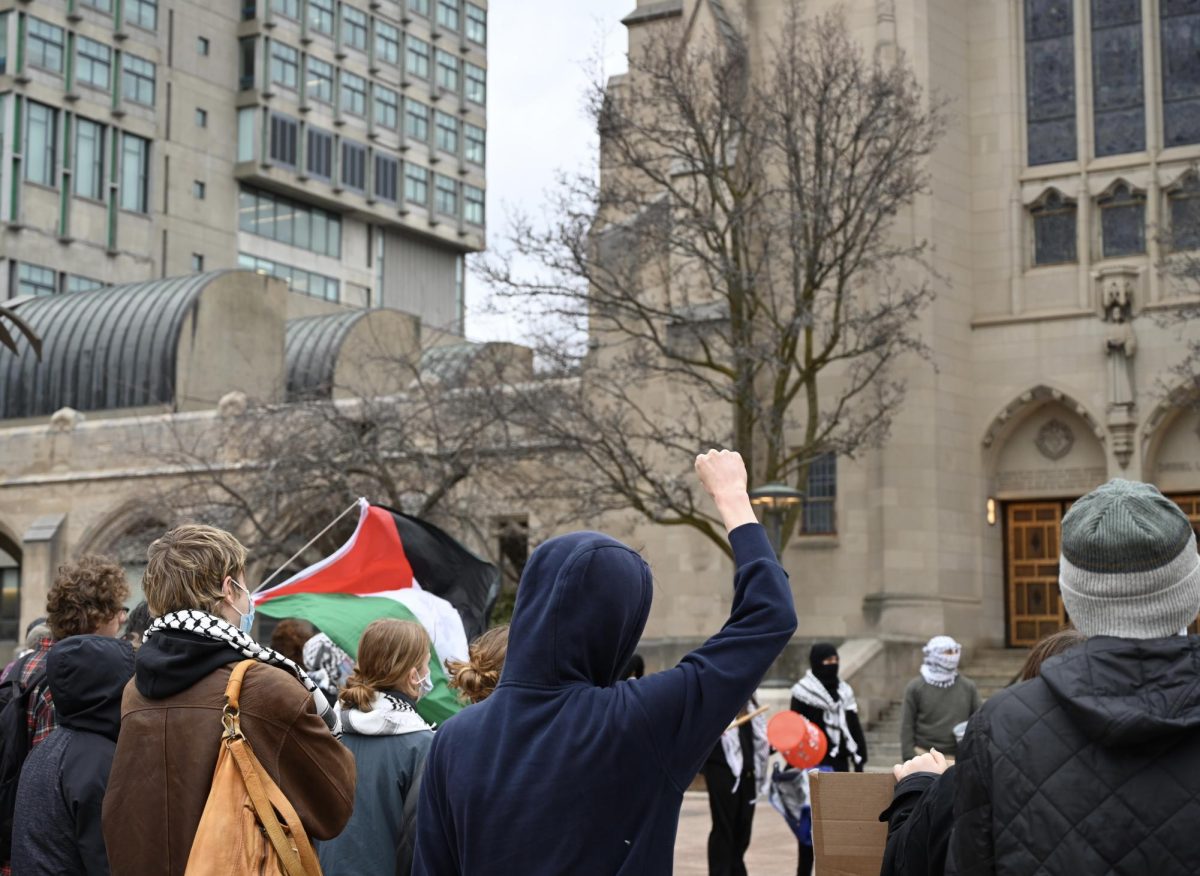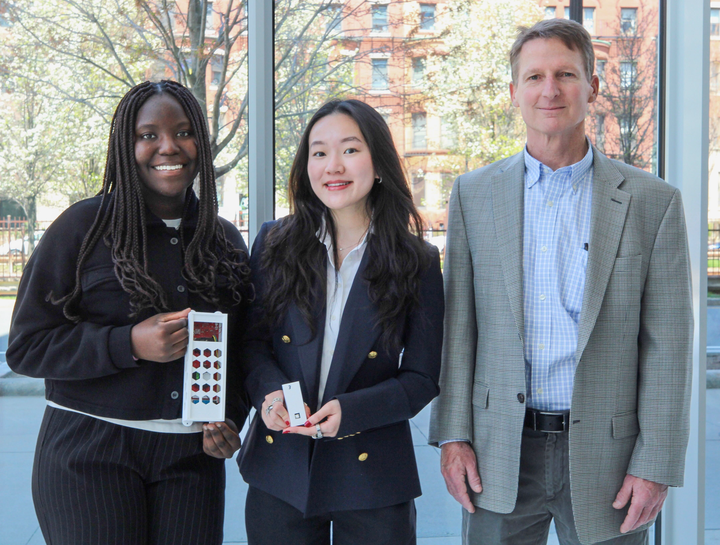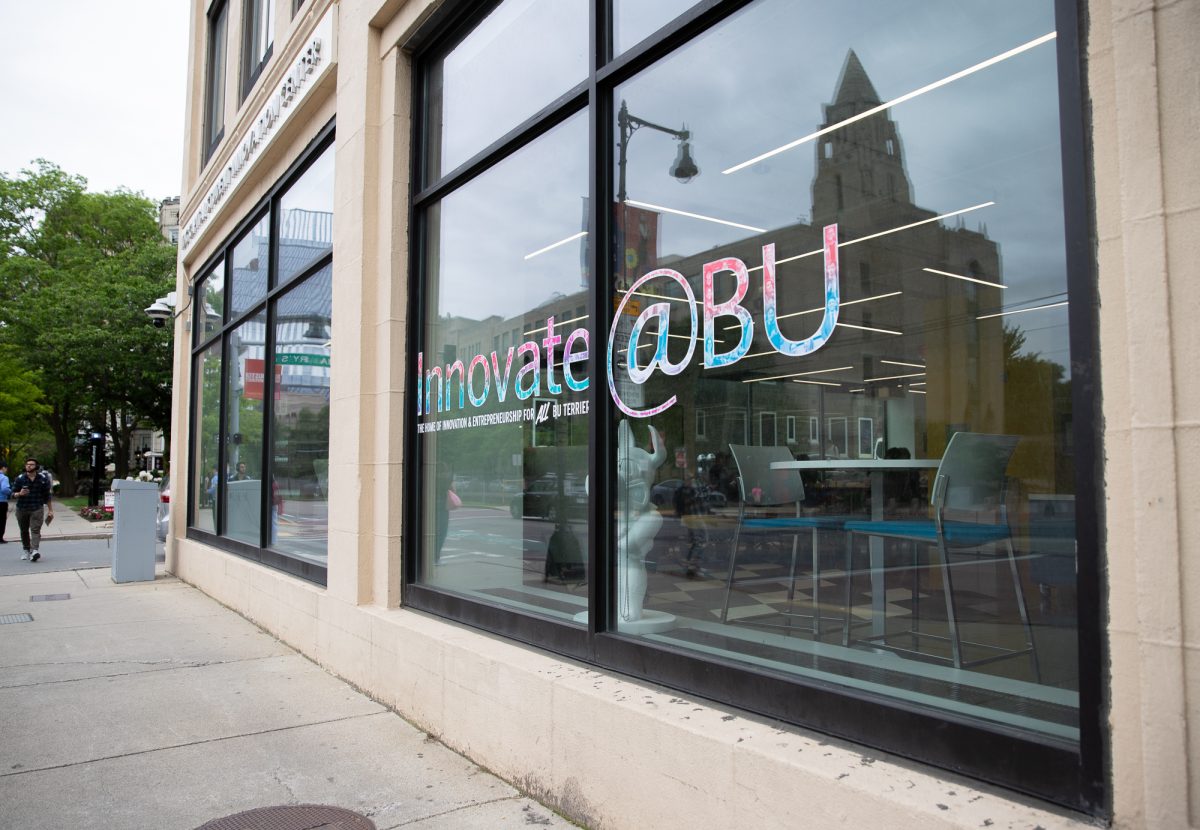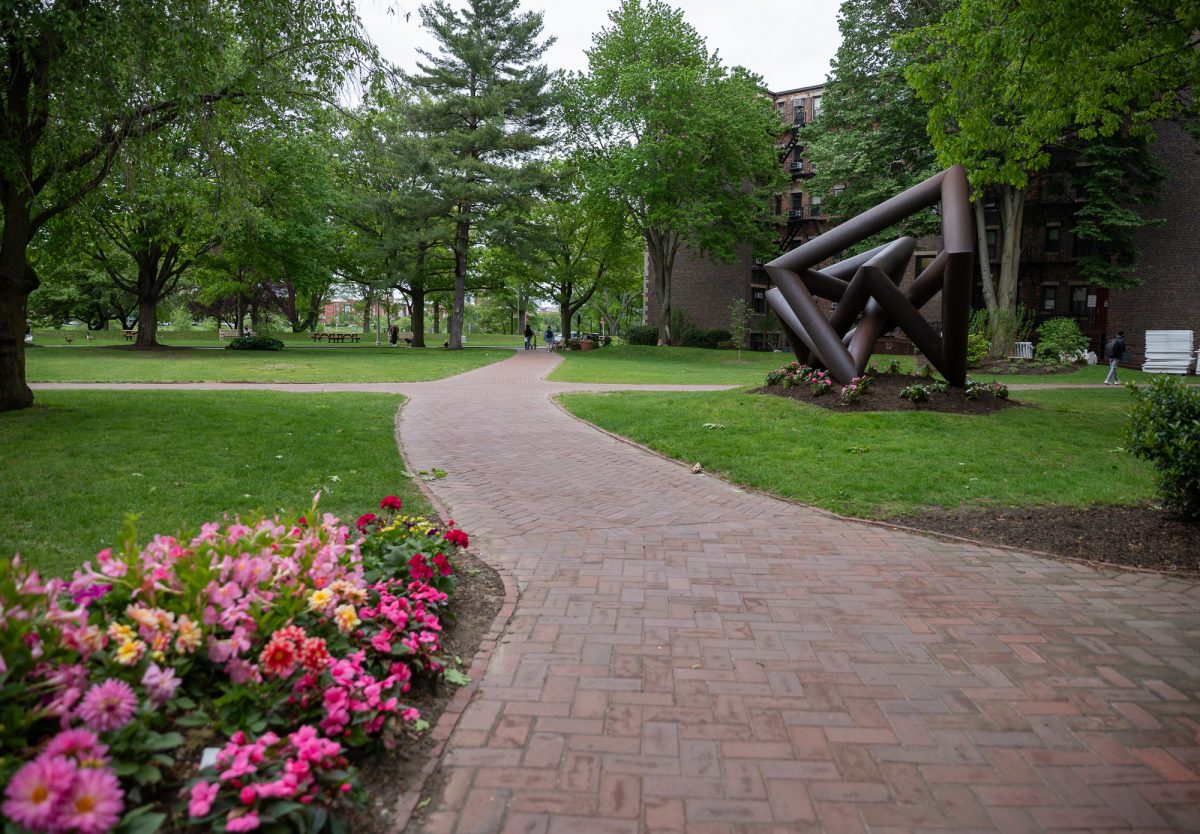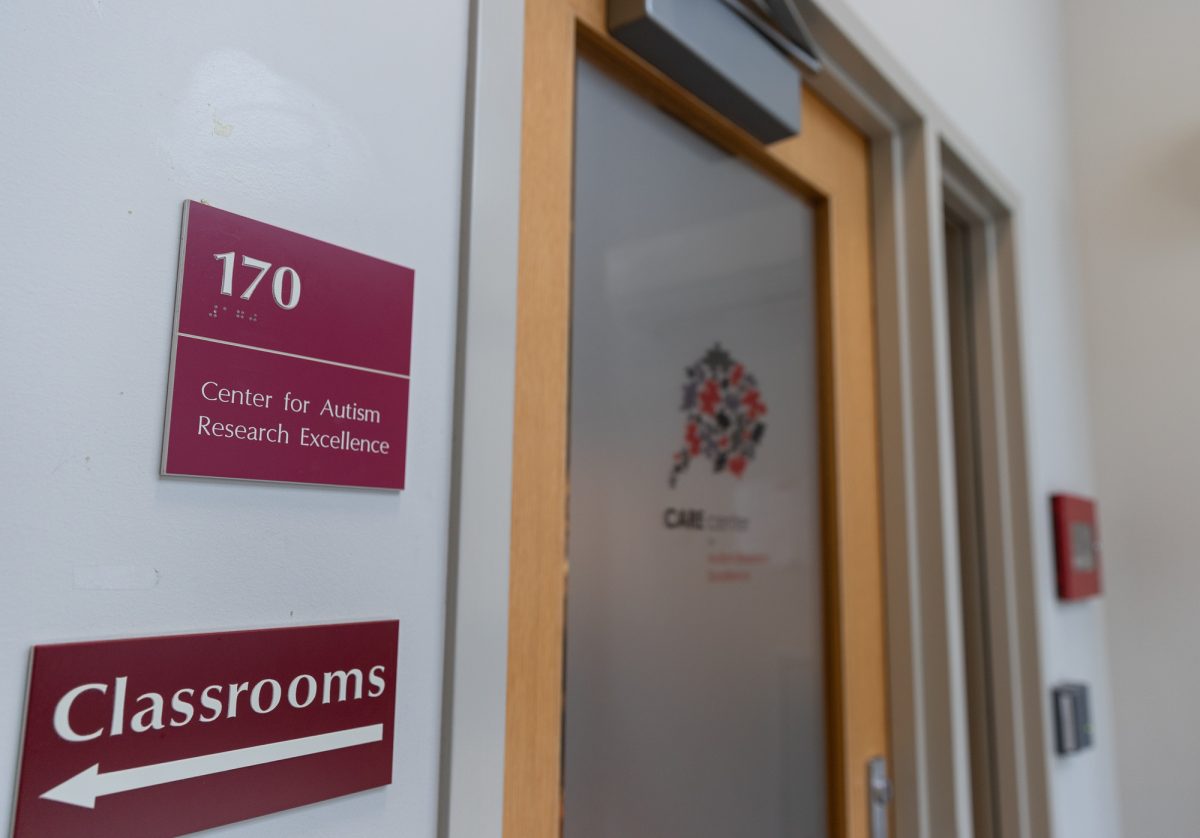Hundreds of hopeful refugees huddle together on a boat and gaze hopefully toward the sky in artist Judith Barry’s latest work, displayed on the façade of the Isabella Stewart Gardner Museum. The striking image will be presented to the public for the next six months as an extension of the Institute of Contemporary Art’s exhibition “Art in the Age of the Internet.”
The untitled work was created using drone images that have been taken of refugees on ships over recent years. In bold capital letters, the 32 by 16 foot piece reads “Global Displacement: Nearly 1 in 100 people worldwide are displaced from their homes.”
“This, of course, is a work that deals with issues that are very prevalent and on the front burner today,” said Pieranna Cavalchini, the contemporary art curator at the museum. “It’s interesting because it’s a topic that can be viewed both as a climate problem as well as a political problem.”
Cavalchini said she thought Barry’s work would be a great addition to the ICA’s program, while also conveying an important message.
“There’s a huge amount of refugees in the past few years leaving and obliged to leave their homes, so it’s a subject matter that we should all be thinking about,” she said.
Barry said she was first drawn to the idea of discussing global displacement in her art in 2015.
“I was looking at a lot of the images of people escaping from the famine and the civil war in North Africa and was struck by the use of drone photography, which I think speaks a lot to our current moment in terms of how we organize even things that are as important as human rights,” Barry said.
Barry and her team began by analyzing these drone images, and later adapted the faces shown in order to obtain higher image quality and greater relatability. The diversity of the refugees is meant to allow every viewer to look at the image and be able to recognize themselves in it.
“The most important thing was that we decided we would replace them with people who look just like many of us,” she said. “Many of the people in this work look exactly like people in the U.S.”
Alison Cesarz, 25 of Chicago, said she was struck by how diverse the refugees look in the artwork.
“It’s interesting that their faces all seem kind of happy,” Cesarz said. “Most of them are smiling, even though the statement is very sad. It is almost an appeal to the viewer that they are people like you.”
The smiling faces may seem a bit uncharacteristic for people who are desperately fleeing their homes, but Barry said the original drone photographs almost always contained smiling, hopeful faces.
“You could ask the question, ‘Is there something about the drone photography that makes us smile? Is it a form of repressed techno-utopia? Do we just automatically smile when we look up?’ I don’t have an answer for that,” she said. “But I find it interesting, because I looked at hundreds of these drone photographs, and in general, people tend to be smiling.”
With Boston’s sanctuary city status, as well as recent political commentary about refugees and climate change, Cavalchini said the museum could not have chosen a better time to display this piece.
“It’s something that all the universities, the students and the professors, are thinking about and teaching, so it’s definitely a topic that is urgent and needs to be thought about carefully,” she said.
It is common to associate refugee status with people outside of the United States, but Barry notes that over the past year in particular, people in the U.S. have been forced out of their homes as well.
“After what has happened in Puerto Rico especially and along the coast of California, you can really see how displacement doesn’t just happen to people living elsewhere,” Barry said.
The statistic that covers the image in large block lettering is meant to be startling. Barry said viewers “don’t know what to make of it when [they] read it, which will hopefully make [them] question what it means.”
Barry chose to leave the work untitled in order to give viewers a chance to form an opinion on their own. However, the statistic certainly raises questions as to what needs to be done to help refugees and fight climate change in the process.
“I think one of the great things about the art world and the spaces that art makes is the fact that these kinds of spaces allow for a multiplicity of voices and a multiplicity of different solutions,” Barry said.






